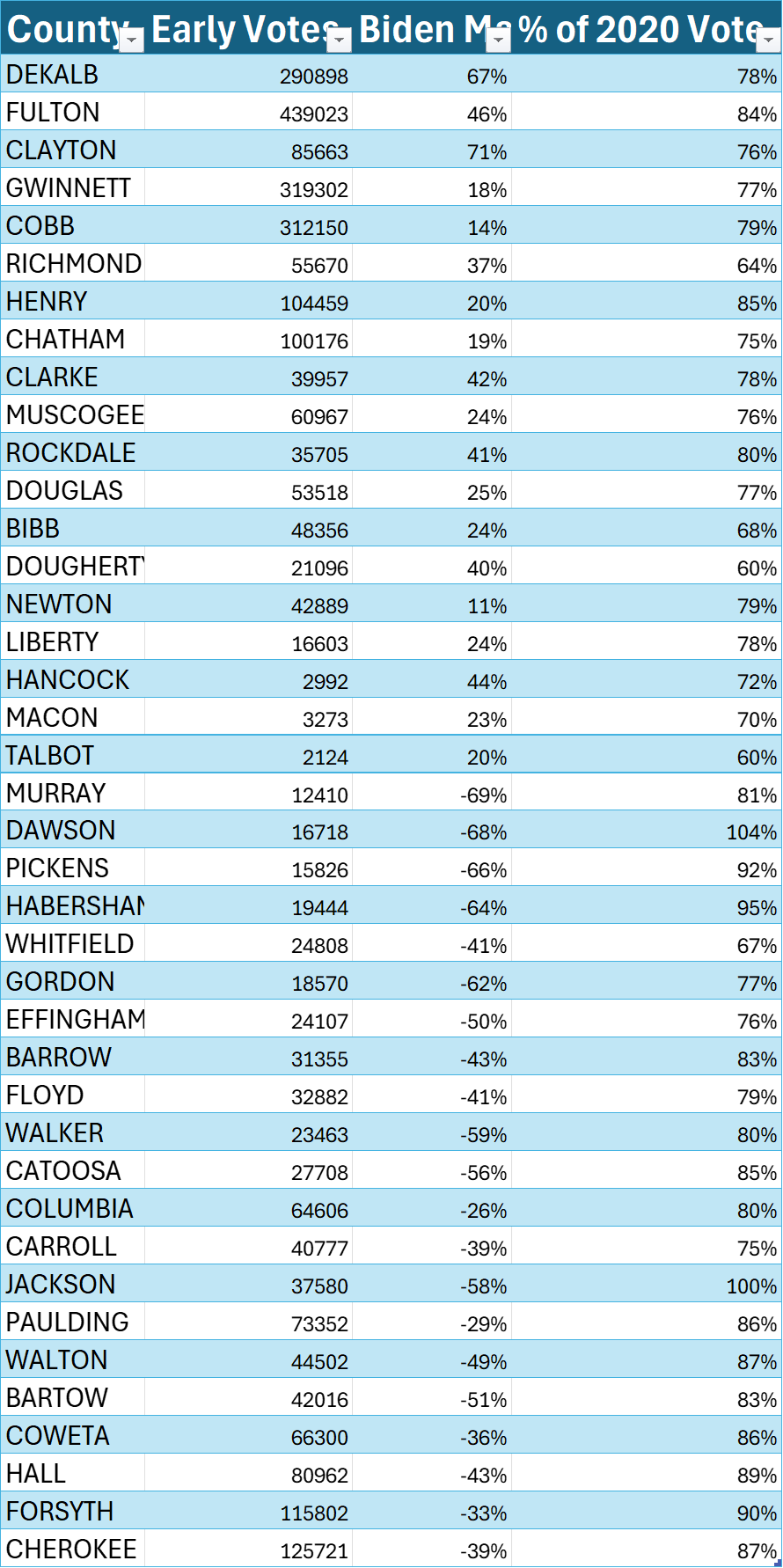Don't Ignore Georgia Early Voting Data
Turnout Looks Bleak for Harris
Georgians have already cast over 4 million ballots, 80% of the 2020 total This is simply too much data to ignore. Any self-respecting data nerd will want to digest this table:
So what does this mean? Well, Democratic counties are showing less early voting enthusiasm than Republican counties. A regression between the third and fourth columns in the above table yields this result (p=0.0001).
Beware the Cannibals (and model humbly)
Election day turnout will probably correlate inversely with early voting. Still, the number of votes cast so far will have some predictive power unless there is a perfect inverse correlation between early and election-day voting. Accordingly, we can bracket likely turnout patterns by two models. One in which early-vote figures get 20% of the weight and 2020 voting figures get 80%. In the second model, early vote figures get 70% of the weight and 2020 figures get 30%. To model the effect of turnout patterns, you multiply each county’s 2020 margin by the predicted number of 2024 votes. This approximates the effect of turnout changes on the likely vote.
For every 10% weight you give to early-vote turnout patterns, Democrats lose 4,000 votes statewide. If early voting gets 20% weight, this would cost Democrats 8,000 votes. A weight of 30% would yield a narrow Republican victory, overcoming Biden’s 11,700 vote margin. If early voting gets 70% weight, then changes in turnout have cost Democrats 28,000 votes.
This analysis assumes that county margins don’t change. While county margins will change, it seems unlikely that the candidate whose best counties have turnout surges would lose vote share. A surge in enthusiasm in a candidate’s best counties predicts greater enthusiasm for that candidate. Accordingly, holding county vote shares constant is a conservative assumption. Winning just on changes in turnout patterns presages a robust path to victory.
If one assumes the correct coefficient for mixing early voting and 2020 turnout is evenly distributed between 0.20 and 0.70, and Trump wins if this number hits 0.30, then his chances of victory are 80% under conservative assumptions about county vote splits. If the coefficient has a mean of 0.45 and a sigma of 0.15, then Trump’s odds of victory would be 86%.
Harris faces an uphill climb to win Georgia but she’s not exactly out of it.



